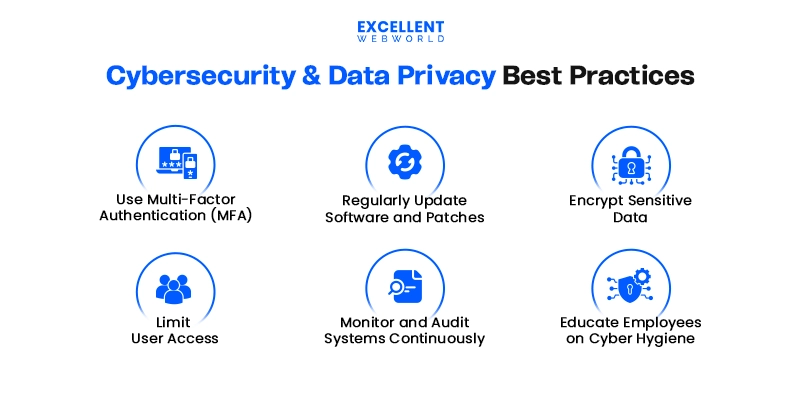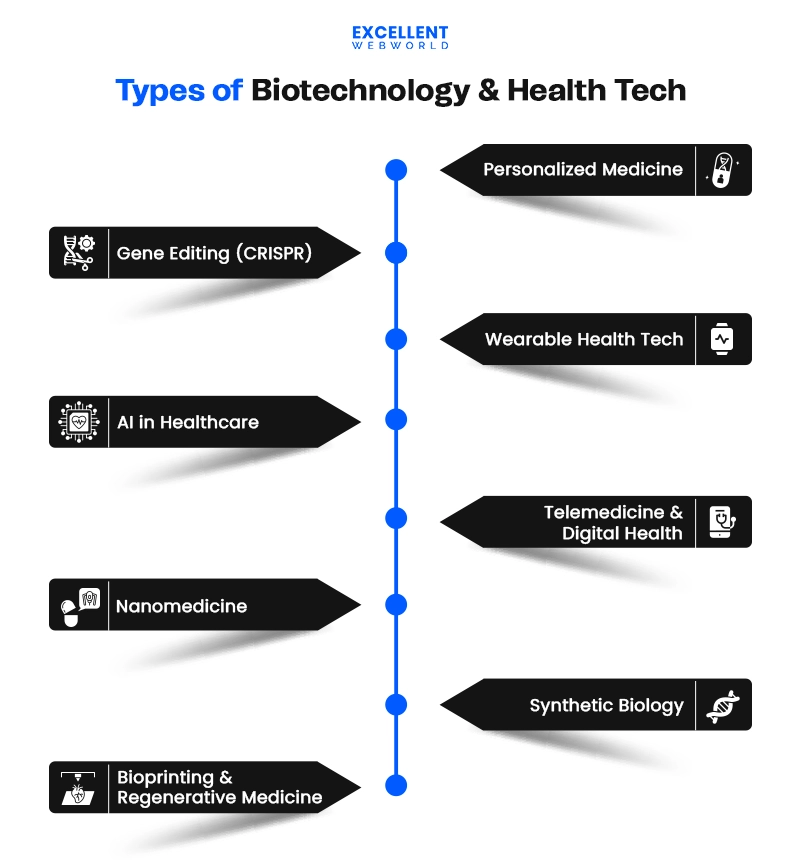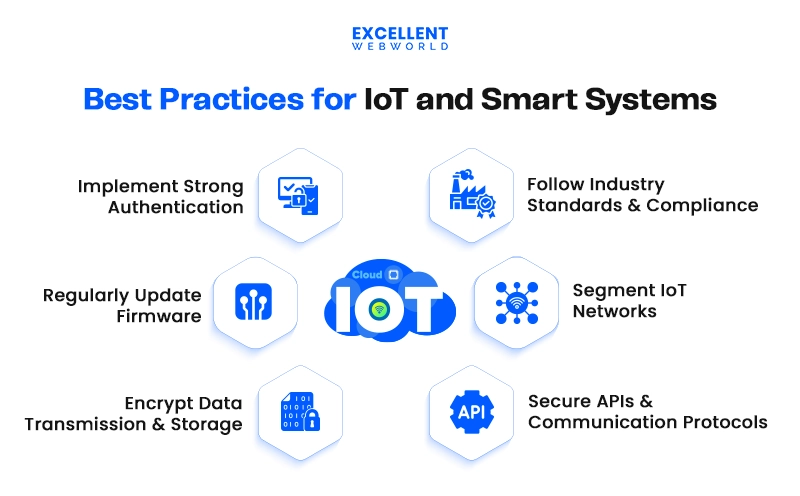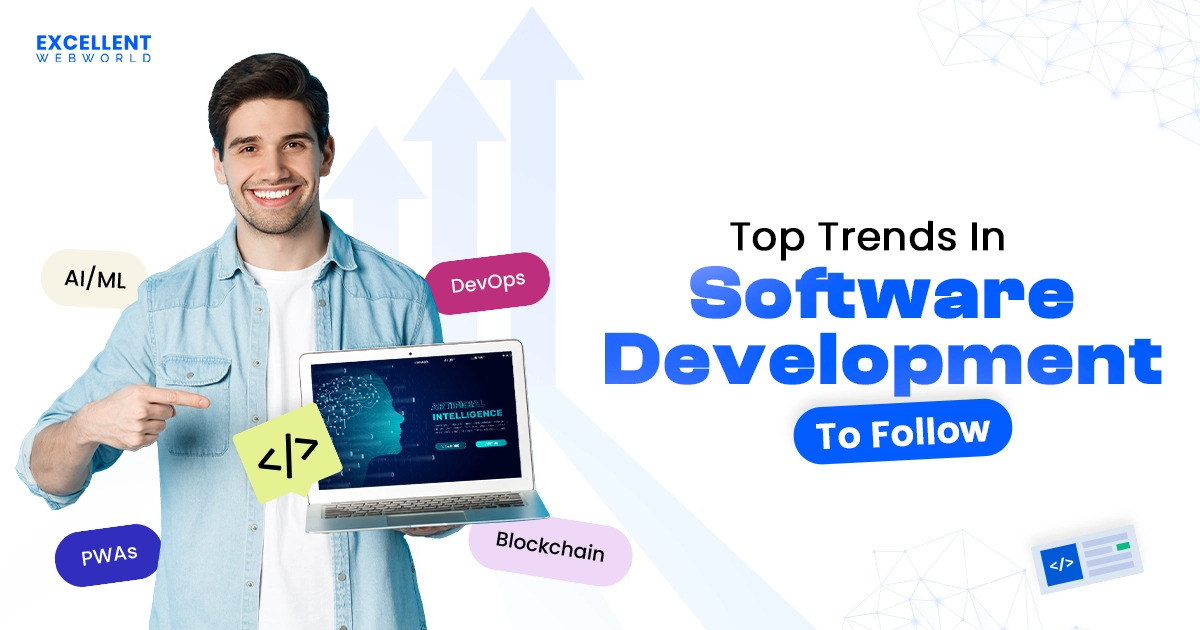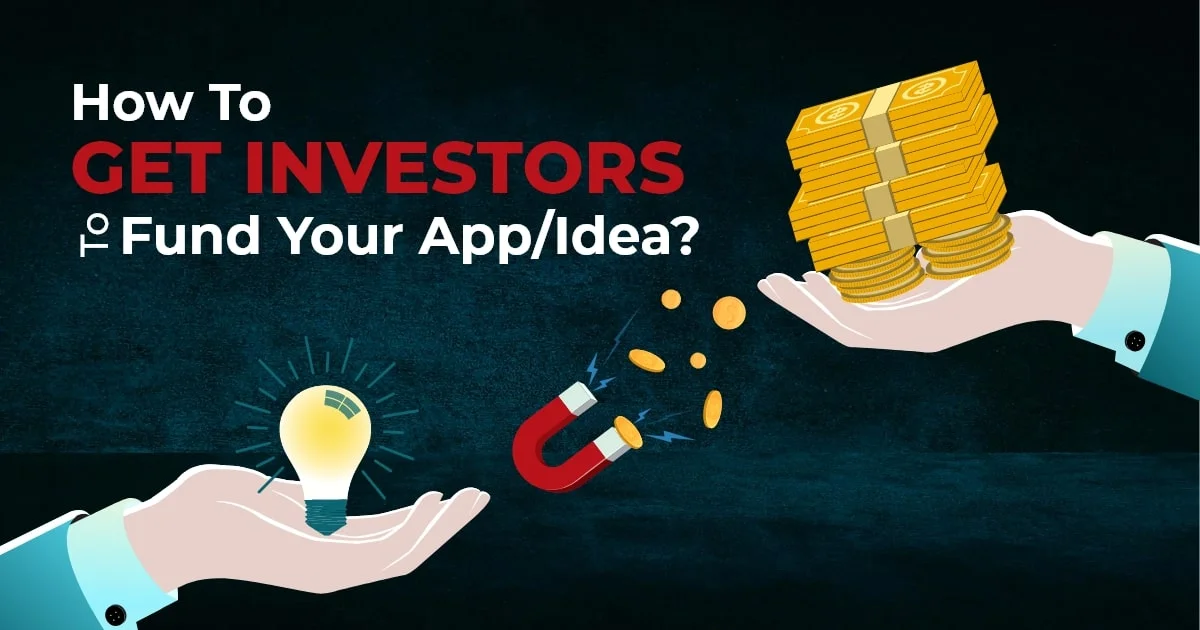With expanding digital technologies, businesses are also required to upgrade their existing systems or create market-leading solutions by staying updated with the latest trends in technology. Advancements in technology help businesses reshape their processes and stay ahead in the market.
In this guide, we explore the top 2025 technology trends that have a high potential to shape the future, from AI and automation to extended reality and quantum computing. These modern and trending technologies help redefine business strategies, influence global markets, and set bars high to be a market leader in the digital technological world.
Whether you’re a business leader, investor, tech enthusiast, or looking to start your own business, keeping up with the latest technology trends will help you unlock new opportunities.
Latest Top Technology Trends That Can Transform Your Business
With the expanding adoption of technologies, it becomes crucial for businesses to keep a close eye on the latest technology trends. As we move into another year of excellence, staying ahead of technology trends is more critical than ever. These emerging technology trends help transform traditional industries.
1. Artificial Intelligence (AI) and Machine Learning (ML) Trends
AI and ML technologies have transformed various industries, including healthcare, retail, eCommerce, travel, fintech, and renewable energy, to automate and optimize routine processes and gain a competitive advantage. When you are wondering how to start your business, you can also check AI business ideas and how they can be transformative and help you to be competitive in the market. AI and machine learning trends help businesses boost their routine processes by automating tasks.
Benefits od AI & ML
A. Generative AI
With the latest trends and technologies, Gen AI is reshaping diverse industries to create human-like content from text, images, and complex simulations. Generative AI models, including GPT and multimodal systems, help in creating new platforms for design automation, content creation, and interactive solutions. Various trending apps use AI algorithms to streamline business processes and automated data management.
B. AI Agents
Artificial intelligence agents are systems capable of implementing workflow automation on behalf of users or another system by designing their workflow and using available tools. These autonomous AI systems help in the smooth decision-making process by analyzing real time data.
C. AI-as-a-Service (AIaaS)
AI as a Service is a modern cloud service that offers access to advanced AI technologies and tools. It helps businesses use advanced algorithms to create AI-enabled apps without establishing their own AI setup and with less initial investment.
D. Natural Language Processing (NLP)
NLP is a subfield of AI and computer science that utilizes ML to enable systems to communicate and understand speech by combining rule-based modeling of human communication. It helps enable Generative AI and integrates deep learning, machine learning, statistical, and data modeling.
2. Connectivity and Networking Trends
Modern connectivity and networking shape digital communication processes by examining and most suitable web and mobile app development trends to ensure enhanced and reliable data exchange. This enables businesses to provide digital experiences, automation, and real-time monitoring.
Benefits of Connectivity and Networking Trends
A. 5G Technology
The global market growth of 5G services is expected to reach US$427.7 billion by 2028. The high speed and low latency abilities of the 5G network help in real-time data collection and monitoring to ensure smooth resource management.
B. 6G Research and Development
6G research and development is an emerging technology trend. It includes the collaborative efforts of diverse industrial leaders, government bodies, and networking service providers worldwide to determine its potential capabilities. In the coming year, 6G research will experience exponential growth and boost focus on sustainable networking, security in quantum communication, and integrating AI/ML technologies for autonomous network management. Major trends in the field include decentralized 6G architecture and AI-driven 6G simulations.
C. Edge Computing and Edge AI
The Edge computing involves processing and storing data close to the device rather than at a central cloud data server. Edge AI, simply stated as AI on the edge, refers to the combination of edge computing and AI technology to execute ML tasks on interconnected devices. The Edge AI is the future technology trend, as it will help diverse industries optimize workflows by addressing concerns like latency and security.
3. Cybersecurity and Data Privacy
With advancements in digital technology, it is crucial to maintain robust cybersecurity to ensure smooth business operations. Adopting and implementing robust security practices and cloud data security helps safeguard data from the potential risk of breaches.
Benefits of Cybersecurity and Data Privacy
A. Zero Trust Security
Zero-trust security is a strategy suitable for multi-cloud networks in the modern digital scenario. This model imposes security policies for specific connections between devices, users, and data transfers. Zero-trust works based on the principle of never trusting, always verifying, rather than trusting all the users inside the network.
B. Post-Quantum Cryptography
Post-quantum cryptography (PQC) is building advanced algorithms to secure quantum computer attacks. PQC is also referred to as quantum-safe, quantum-proof, or quantum-resistant.
C. AI-Powered Cybersecurity
AI-powered cybersecurity uses smart algorithms to watch for, find, and study cyber threats in real-time. It also looks at data patterns to spot and stop possible attacks before they happen. A reliable cybersecurity services provider can help set up these AI tools to keep your systems safer.
4. Extended Reality (XR) and the Metaverse
As one of the top technology trends of 2025, Metaverse’s revenue is estimated to be up to $ 5 trillion by the end of the year 2030. This figure justified the potential of the technology to transform your business. However, it is important to understand what Extended reality and metaverse technology combine all the technologies that integrate virtual components with the real world, including AR, VR, and mixed reality. Metaverse technology refers to the immersive and shared setup where users can easily communicate using XR technologies.
Benefits
A. Virtual Reality (VR) and Augmented Reality (AR)
AR uses real-world objects, and users manage their presence in real setups. In contrast, virtual reality is completely virtual, and the system controls the users. Both AR and VR are next-generation technologies that help create an immersive user experience.
B. Mixed Reality (MR)
Mixed reality (MR) is an advanced technology that uses sensing and imaging sensors to combine the digital environment with the physical world. To leverage the full potential of MR, it is important to stay updated with eCommerce trends, where users can easily interact with virtual and real objects simultaneously.
C. Digital Twins Technology
The digital twin is a virtual representation of a physical system or object accurately presented for smooth analysis, forecasting, and optimization processes. This advanced technology helps businesses visualize and simulate diverse outcomes in the virtual world before implementing them in a real-world scenario.
5. Quantum Computing
Quantum computing is an emerging technology trend whose market size is estimated to grow by $1765M by the end of 2026. It uses qubits (quantum bits) to streamline complex calculations and save time.
Benefits of Quantum Computing
A. Commercial Applications of Quantum Computing
This refers to the practical usage of quantum computing in various industries to resolve real-world hurdles, that are hard to solve with traditional systems. With enhancements in quantum hardware and architecture, diverse segments like AI, climate modeling, and energy optimization will benefit the most.
B. Quantum Cryptography
Quantum cryptography is an enhanced security practice that uses quantum mechanics principles to build highly secure communication solutions. Traditional cryptographic approaches rely on complex mathematical algorithms that can be broken by quantum computing, while quantum cryptography uses the law of physics to ensure data security.
6. Biotechnology and Health Tech
By staying updated with telehealth trends, healthcare professionals can stay updated with modern technological advancements. Biotechnology and modern health technology help provide healthcare services by integrating advanced technologies to create data-driven medical solutions.
This ensures smooth patient care, increases accessibility to medical services, and drives the future of preventive and precision medicine.
Benefits of Quantum Cryptography
A. Personalized Medicine and Gene Editing
Personalized medicine and gene editing are revolutionizing the medical segment with custom healthcare based on the genetic specifications of individuals. Advances in genomics allow doctors to identify genetic predispositions to diseases, enabling early intervention and targeted therapies.
B. Wearable Health Tech
Wearable health technology is a smart device solution that includes fitness trackers, smartwatches, and biosensors to monitor real-time healthcare data. This tech is also transforming remote patient monitoring and preventive healthcare.
C. AI in Healthcare
Artificial intelligence in Healthcare helps enhance diagnostics, treatment planning, and smooth patient care. AI-powered healthcare helps in analyzing X-rays and MRIs to detect diseases early and boost treatment accuracy. AI-driven chatbots and virtual assistants boost patient engagement by answering medical queries, scheduling appointments, and providing remote consultations.
7. Sustainable and Green Technologies
As the most transformative 2025 technology trends, sustainable and green tech aim to minimize the harmful effects on the environment by reducing carbon footprint to protect the plant. Their main objective is to boost energy efficiency sources (for example, cloud data) by prioritizing sustainability. As a result, approximately 50% of CIOs are planning to integrate robust performance metrics when creating sustainable IT strategies.
Benefits of Sustainable and Green Technologies
A. Green IT and Sustainable Computing
Green computing, also called Sustainable IT or Green IT, is a sustainable technology that aims to limit computers’ environmental impact and reduce energy consumption and carbon emissions by data centers, manufacturers, and other organizations.
B. Carbon-Neutral Data Centers
Carbon-neutral data centers are facilities created to reduce the environmental impact by using renewable energy and energy-efficient solutions. Many facilities also integrate energy-efficient hardware, AI-driven resource management, and innovative cooling methods like liquid immersion or free-air cooling.
8. Autonomous Systems and Robotics
Modern autonomous systems and robotics transform industries by enabling machines to work smoothly with less human effort. These platforms use AI/ML and advanced sensors to navigate, analyze data, and make real-time decisions.
Benefits of Autonomous Systems and Robotics
A. Autonomous Vehicles and Drones
Autonomous vehicles and drones are revolutionizing logistics, transportation, and surveillance by integrating AI, IoT, and automation alongside advancements in web and mobile app development trends. Self-driving cars use AI algorithms, LiDAR, and computer vision technology to navigate roads safely, while drones are revolutionizing industries like delivery services, agriculture, and disaster management.
B. Robotics in Healthcare
Robotics in Healthcare aims to boost patient care. It includes AI-powered diagnostics, robotic-assisted surgeries, and automated rehabilitation systems. These have transformed healthcare facilities and increased accuracy.
C. AI-Powered Automation
AI-powered automation helps streamline business workflow by automating routine tasks and improving operational efficiency and decision-making processes.
9. Blockchain and Decentralized Technologies
Blockchain is one of the prominent software development trends. It has become crucial for businesses to ensure secure digital transactions. According to a research study by Gartner, blockchain has the potential to reach $3.1 trillion worldwide. The latest statistics also suggest that blockchain helps boost businesses by reducing costs and streamlining financial transactions.
Benefits of Blockchain and Decentralized Technologies
A. Web 3.0
Web 3.0, also known as the Semantic Web, is a next-generation internet that creates a connected web by integrating advanced technologies like AI, ML, IoT, and big data. This technology also involves building decentralized systems based on blockchain algorithms. Homomorphic encryption and zero-knowledge-proof technologies help boost data security and privacy.
B. Blockchain Beyond Cryptocurrency
Beyond cryptocurrency, blockchain technology offers decentralized, transparent, and secure solutions across various industries. It enables tamper-proof record-keeping, smart contracts, and decentralized applications (DApps), transforming sectors like supply chain management, healthcare, finance, and real estate.
C. Decentralized Finance (DeFi)
DeFi, or decentralized finance, is a peer-to-peer system that manages financial services on Ethereum and public blockchains to remove third parties or intermediaries and centralized authority.
D. Smart Contracts
A smart contract is a digital program that automates the required actions in the blockchain transactions. By automating the workflow, the need for mediators can be removed, and the next event can be triggered when certain requirements are met.
10. Internet of Things (IoT) and Smart Systems
When analyzing the latest trends and technologies, the Internet of Things (IoT) comes to mind. It has transformed the way we work and interact with others. IoT devices are embedded with sensors that streamline the flow of data over the Internet. The latest trends in IoT help businesses facilitate smooth workflow and data transfer.
Benefits of IoT and Smart Systems
A. Big Data Analytics
Big data analytics is the systematic process of analyzing large amounts of data to gain comprehensive insights. It helps determine trends and data patterns to streamline the decision-making process. This allows businesses to collect data from multiple sources, including financial devices, social media, IoT sensors, and smart devices, to predict future trends and analyze customer behavior.
B. Industrial IoT (IIoT)
The industrial Internet of Things (IIoT) is an ecosystem of connected devices, applications, and sensors used in industrial solutions. Considering the benefits of IoT for diverse industries, it highlights how it helps monitor and analyze data from industrial processes, enhancing visibility and maintenance capabilities. IIoT is one of the necessary technologies for implementing Industry 4.0.
C. Smart Cities and Infrastructure
Smart city infrastructure refers to the network of interconnected systems within a smart city that utilizes advanced technology to gather required data, optimize resource utilization, and boost overall efficiency.
D. AI-Driven IoT Optimization
AI-driven IoT optimization involves using AI algorithms to boost IoT performance, efficiency, and productivity. Artificial intelligence assists in smooth data transfer, device communication, and network traffic management.
11. Software Development and Digital Transformation
Digital transformation utilizes modern technologies to build custom, high-performing software to help digitalize business processes. There are various trending developer technologies, including Swift, Ionic, React, and others, that help build marketing solutions. This helps businesses boost efficiency, scalability, and user engagement.
Benefits of Software Development and Digital Transformation
A. Low-Code/No-Code Platforms (LCNC)
Low-code/no-code (LCNC) platforms are software development architectures that help users build feature-rich applications with less coding. These platforms utilize drag-and-drop components and a pre-built toolkit, aiming to reduce time and unnecessary effort.
B. DevOps
DevOps streamlines development and IT operations through improved collaboration and workflow automation. It also reduces downtime and ensures system reliability by implementing Continuous Integration/Continuous Deployment (CI/CD) pipelines and real-time monitoring.
C. Cloud Computing Advancements
Cloud computing advancement refers to the ongoing development and enhancement of cloud computing technologies to improve scalability, security, advanced data analytics, AI algorithm integration, edge computing, and management of hybrid and multi-cloud architectures.
12. Human-Computer Interaction and Interfaces
Modern human-computer interaction(HCI) uses smart systems to enhance user interaction with technology. This can be done when experts stay updated with the latest mobile app design trends to ensure engaging UI/UX and streamlined workflow. This aims to provide an immersive digital experience and enhance scalability through automated processes.
Benefits
A. Voice Search and Conversational Interfaces
Voice search technology allows users to use voice commands to search for specific things on the Internet instead of typing. Conversely, a conversational user interface (UI) is a digital platform that helps users interact with a system using natural human language through text or voice (e.g., Apple’s Siri and Amazon Alexa).
B. Facial Recognition Technology
The facial recognition system is an advanced technology that uses algorithms to recognize human facial patterns and verify identity by analyzing unique features. In other words, it enables a machine to identify facial features using biometric identification processes used for security purposes and authentication.
C. Brain-Computer Interfaces (BCI)
Brain computer interface is also called brain-machine interface(BMI), which translates human brain signals and electrical processes into understandable commands that control computers and devices.
Key Takeaways: How 2025’s Technology Trends Will Shape Industries
Trending technologies have transformed the processes of various industries, including manufacturing, retail, e-commerce, logistics, and customer service. Technology trends like artificial intelligence (AI), automation, and the expansion of 5G are set to revolutionize industries with their transformative potential to boost business. Growing enterprises, well-established businesses, and organizations that embrace and implement these trends will gain a competitive advantage. At the same time, individuals who upskill themselves and stay informed will thrive in this digitally advanced era.
The advanced technological trends will redefine how businesses operate, compete, and innovate in a rapidly evolving digital landscape. Excellent WebWorld is the expert advanced technology service provider that helps organizations drive growth, efficiency, and profitability.

Article By
Mayur Panchal is the CTO of Excellent Webworld. With his skills and expertise, He stays updated with industry trends and utilizes his technical expertise to address problems faced by entrepreneurs and startup owners.

